
Korean Artist Gives New Life To Busts, Antique Paintings, And Photos By Turning Them Into Hyperrealistic Portraits (9 Pics)
The works of South Korean hyperrealist painter Joongwon Jeong, a freelance illustrator who studied Design and Visual Communication at Hongik University of Art & Design in Seoul, can easily impress anyone. We have already shown some of the artist’s work two years ago and today we return with more. This time, Joongwon Jeong breathes new life into antique paintings and famous busts by giving them an acrylic paint makeover.
Being his favorite type of paint, acrylic on canvas according to Jeong is very versatile as it allows to emulate both the viscous texture of the oil and soft splash of watercolors.With solo and group exhibitions in Seoul, Jeong is also quite popular on the internet, especially on his Facebook page where you can see much more of his amazing work.
On his website, Jeong quotes a phrase from Aristotle:“Aristotle once said: ‘A corpse is repulsive, but the painting of a corpse can be beautiful.’ And I say, ‘Purulent acne is repulsive, but the painting of a pimple can be beautiful.’” He believes it is this magic of paradoxical transformation that keeps him practicing in hyperrealistic portraits.
Scroll down and see for yourself!
More info: Facebook | Instagram | blog.naver.com | deviantart.com
Venus de Milo
Image credits: Joongwon Jeong
Venus de Milo is one of the oldest known statues that is currently on display at the Louvre Museum. It is believed that she is the representation of the Goddess Aphrodite. Although some claim that it is, in fact, the sea-goddess Amphitrite, venerated on Milos.
Homer
Image credits: Joongwon Jeong
Homer or the “teacher of Greece” was the one to create one of the most important foundations of the West’s intellectual development. He became the “father of western literature” – resource to the great tragedians, the model for Vergil when he was commissioned by Augustus to create The Aeneid, the inspiration for the earliest science fiction, old Irish folklore, Dante, Shakespeare, James Joyce.
Giuliano de’ Medici
Image credits: Joongwon Jeong
Giuliano de’ Medici was a co-ruler of Florence together with his brother Lorenzo the Magnificent. He complemented his brother’s image as the “patron of the arts” with his own image as the Handsome, sporting the name of “golden boy.”
Costanza Bonarelli
Image credits: Joongwon Jeong
Costanza Bonarelli’s bust is a work of the Italian sculptor Gian Lorenzo Bernini, made between 1636 and 1638. The portrait was made of marble (72 cm high) and is preserved in the Bargello Museum in Florence.
Costanza Piccolomini Bonarelli was actually the wife of Matteo Bonarelli, a sculptor who worked as Bernini’s assistant in 1636.
The Death of Seneca
Image credits: Joongwon Jeong
The Roman philosopher Seneca was accused of taking part in a conspiracy against Nero and was ordered to commit suicide. Seneca accepted the sentence and his wife chose to die with him.
Michelangelo’s Adam
Image credits: Joongwon Jeong
A fresco painting by Italian artist, Michelangelo, painted in 1508-1512, The Creation of Adam forms part of the Sistine Chapel’s ceiling. Chronologically the fourth in the series of panels, it depicts a creation story from Genesis where God gives life to Adam.
Michelangelo’s God
Image credits: Joongwon Jeong
Michelangelo’s Creation of Adam is the most famous part of the Sistine Chapel.
Vincent van Gogh
Image credits: Joongwon Jeong
Vincent Willem Van Gogh was a Dutch painter considered one of the most influential artists of our times, although his recognition came only after his death. While alive, he sold only one painting – “The Red Vineyard”. Van Gogh never imagined his fame. He was the son of Theodorus Van Gogh and Cornelia, a woman with artistic tendencies. He had four younger brothers but it was with Theo, the second son, that Van Gogh established a strong relationship marked by letters exchanged between the two. With poor mental health and bouts of madness, he ended his life in July 1890 at the age of 37.
Sigmund Freud
Image credits: Joongwon Jeong
Sigmund Freud, born in 1856, became the founder of Psychoanalysis. He was the son of a merchant, Jacob Freud, and his much younger second wife, Amalia Nathanson – the mother’s image would later influence many of Freud’s studies. Some of his brothers from the first marriage were about twenty years older than him. At the age of four, Freud moved with his family to Vienna. He graduated from the University of Vienna where he first chose Philosophy, a field that would later illuminate his theoretical production, then decided on Medicine, specializing in Nervous Physiology.
93Kviews
Share on FacebookIt’s cool, I like this concept. My criticism is that some of the sculptures look more beautiful than the paintings.
Agreed! Sometimes you just need to leave well enough alone. The classics are sometimes better than the new.
Load More Replies...He shows up everywhere. I try to be civil and polite. He aint necessarily invited.
Load More Replies...Even though it's hard to compare two differerent kinds/styles of art, I do not think that his work is better than the original.
I much prefer the power of imagination rather than a modern artist spoiling it all with his interpretation. The original works are already beautiful, we already create vision and meaning from them. We don’t need this.
Correction, you don't need it. Some people do. Just sayin'.
Load More Replies...Why does anybody would do a sigmund freud hyperrealistic portrait??? A photography is by itself an hyperrealistic portrait🤦♀️
I like your drunk uncle. He probably had a few things to say.
Load More Replies...I like these. They don't diminish my respect. They help me to see our everyday faces in a different light. It is good to see what we can do.
Lovely work. Love to see your rendition of David, a shot of his face and then the full body!
The artist's TEDx talk gives a great deal of insight into the philosophy behind the paintings: https://www.youtube.com/watch?v=akpeOzW3y6I
There are actually better photos of Van Gogh, he walked miles and miles and lived rough. He'd not look so smooth. Use extant photos please.
Not feeling totally erasing someone elses art. The second artis is super talented please do t get that wrong, but another artis work jis got erased from history. :(
Good works, but he changed them. Van Gogh has a different face shape. It's not something "special". Just good artistic skills. A lot of artists have the same...
Thanks for giving these historic masterpieces human faces.Well done! IMG_201901...113135.jpg 
Do think Giuliano de’ Medici was like "dude, my neck doesn't look like that"
The beauty of Van Gogh's self-portrait lies in the way he sees himself, not the "realism" imposed by this redo. Similarly, none of the other works are improved, nor are they breathed "new life." They are just interpretations that are, sadly, inferior to the masters, and while it is clear a lot of time and love was spent on the effort, they just aren't special. They have removed that which was special.
Is it just me or does Van Gogh look a bit like a young Donald Sutherland? (Sutherland missed out by not starring in a Van Gogh biopic.) 449c592d4e...fea346.png 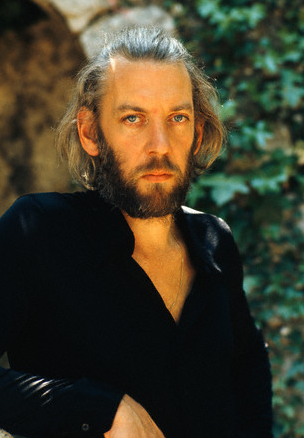
Just saying as opinion, im pretty sure he didn't look like young Donald Sutherland. So it might just be you. No offense offered, none taken.
Load More Replies...I always felt Van Gogh was better, and healthier, looking than his self-portrait. Vincent, I wish the level of knowledge about, and attitude toward, your hardships had been better in your day. You might have had a chance at some happiness. You deserved it.
It’s cool, I like this concept. My criticism is that some of the sculptures look more beautiful than the paintings.
Agreed! Sometimes you just need to leave well enough alone. The classics are sometimes better than the new.
Load More Replies...He shows up everywhere. I try to be civil and polite. He aint necessarily invited.
Load More Replies...Even though it's hard to compare two differerent kinds/styles of art, I do not think that his work is better than the original.
I much prefer the power of imagination rather than a modern artist spoiling it all with his interpretation. The original works are already beautiful, we already create vision and meaning from them. We don’t need this.
Correction, you don't need it. Some people do. Just sayin'.
Load More Replies...Why does anybody would do a sigmund freud hyperrealistic portrait??? A photography is by itself an hyperrealistic portrait🤦♀️
I like your drunk uncle. He probably had a few things to say.
Load More Replies...I like these. They don't diminish my respect. They help me to see our everyday faces in a different light. It is good to see what we can do.
Lovely work. Love to see your rendition of David, a shot of his face and then the full body!
The artist's TEDx talk gives a great deal of insight into the philosophy behind the paintings: https://www.youtube.com/watch?v=akpeOzW3y6I
There are actually better photos of Van Gogh, he walked miles and miles and lived rough. He'd not look so smooth. Use extant photos please.
Not feeling totally erasing someone elses art. The second artis is super talented please do t get that wrong, but another artis work jis got erased from history. :(
Good works, but he changed them. Van Gogh has a different face shape. It's not something "special". Just good artistic skills. A lot of artists have the same...
Thanks for giving these historic masterpieces human faces.Well done! IMG_201901...113135.jpg 
Do think Giuliano de’ Medici was like "dude, my neck doesn't look like that"
The beauty of Van Gogh's self-portrait lies in the way he sees himself, not the "realism" imposed by this redo. Similarly, none of the other works are improved, nor are they breathed "new life." They are just interpretations that are, sadly, inferior to the masters, and while it is clear a lot of time and love was spent on the effort, they just aren't special. They have removed that which was special.
Is it just me or does Van Gogh look a bit like a young Donald Sutherland? (Sutherland missed out by not starring in a Van Gogh biopic.) 449c592d4e...fea346.png 
Just saying as opinion, im pretty sure he didn't look like young Donald Sutherland. So it might just be you. No offense offered, none taken.
Load More Replies...I always felt Van Gogh was better, and healthier, looking than his self-portrait. Vincent, I wish the level of knowledge about, and attitude toward, your hardships had been better in your day. You might have had a chance at some happiness. You deserved it.
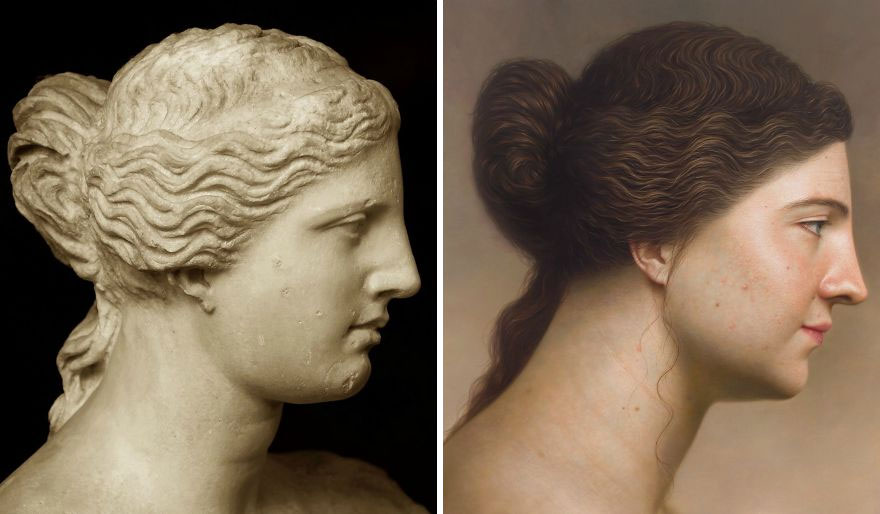
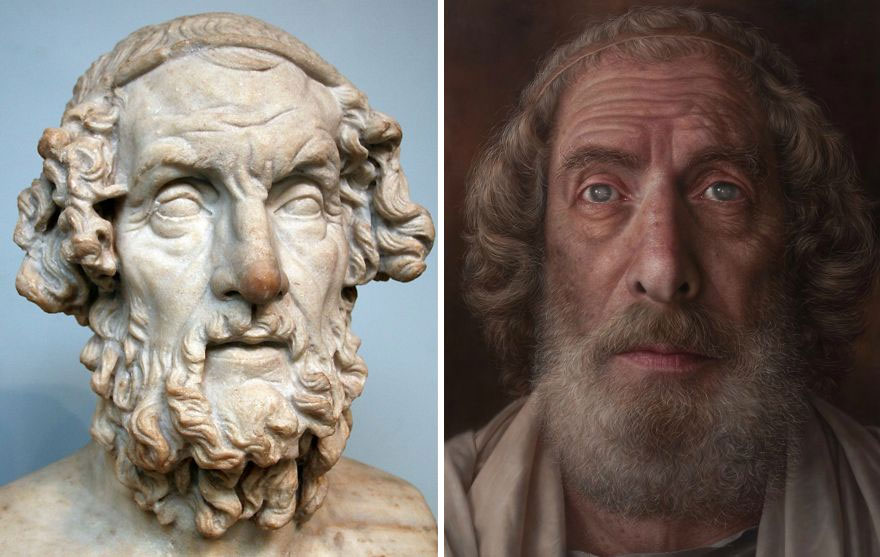
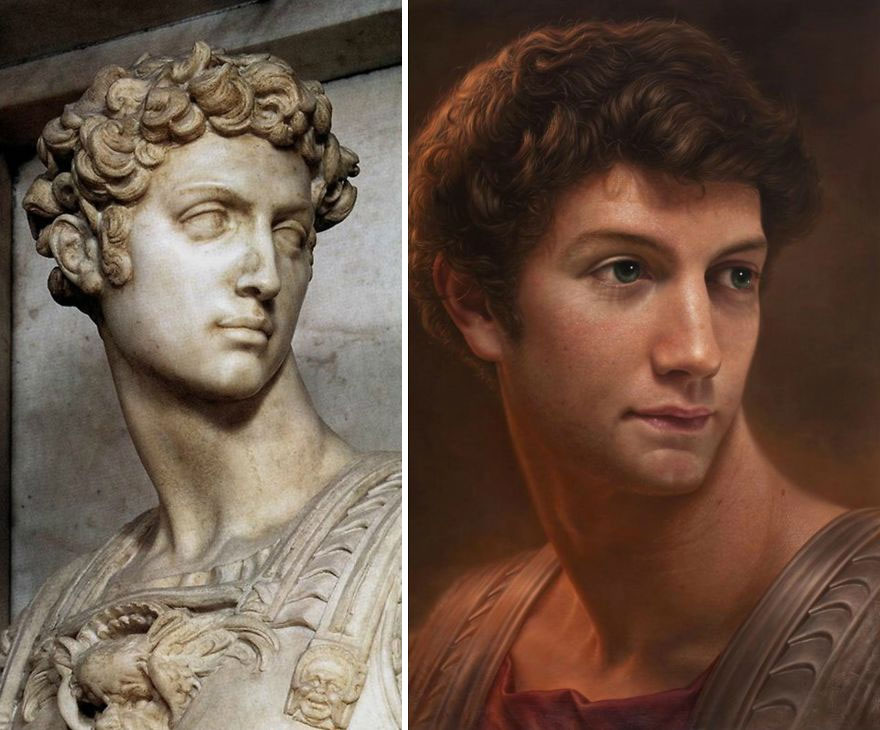
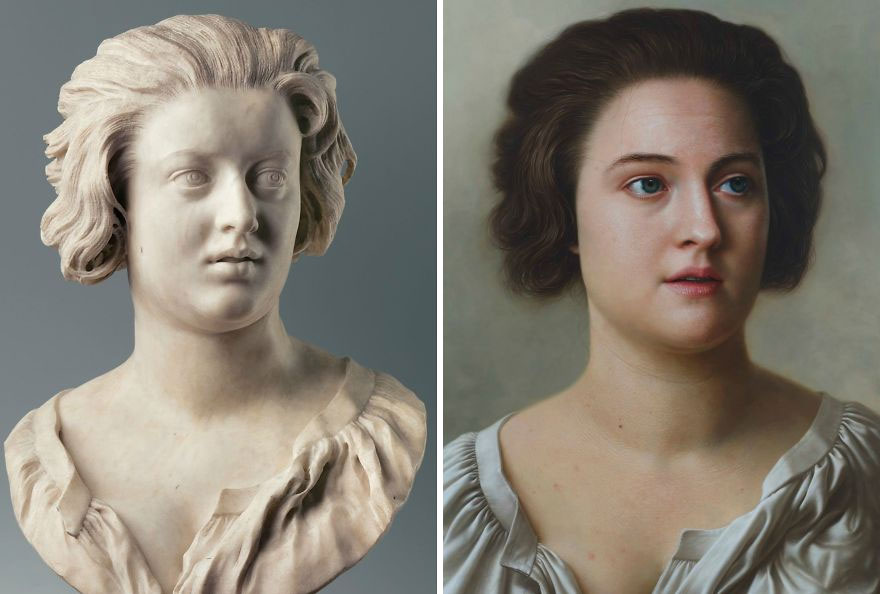
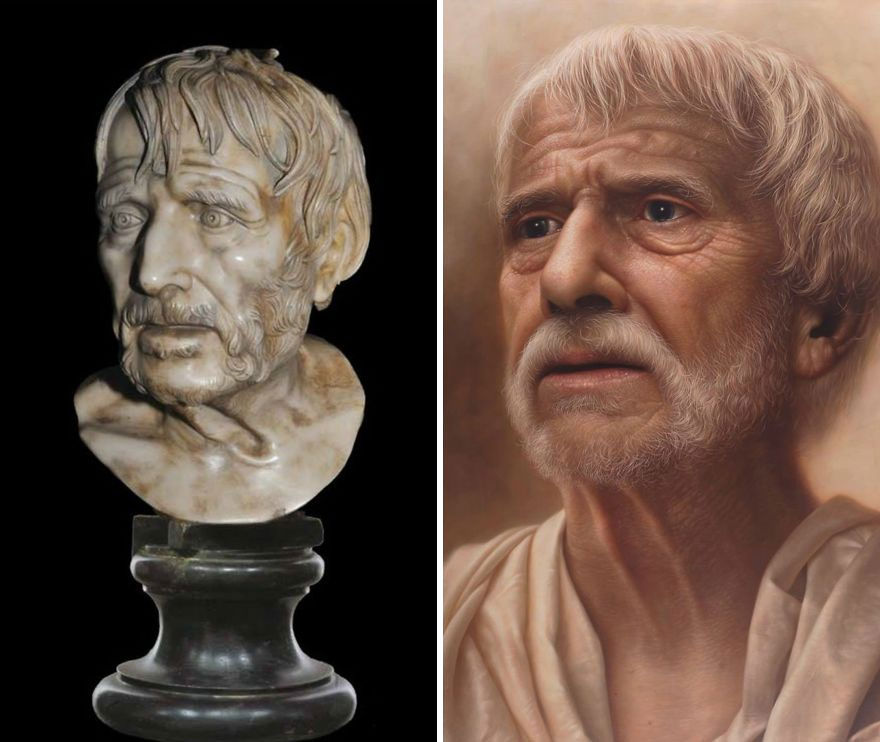
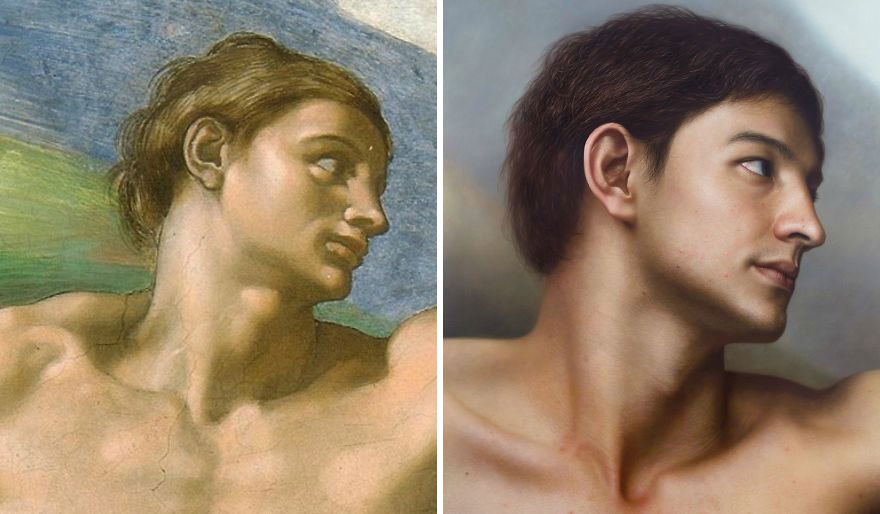
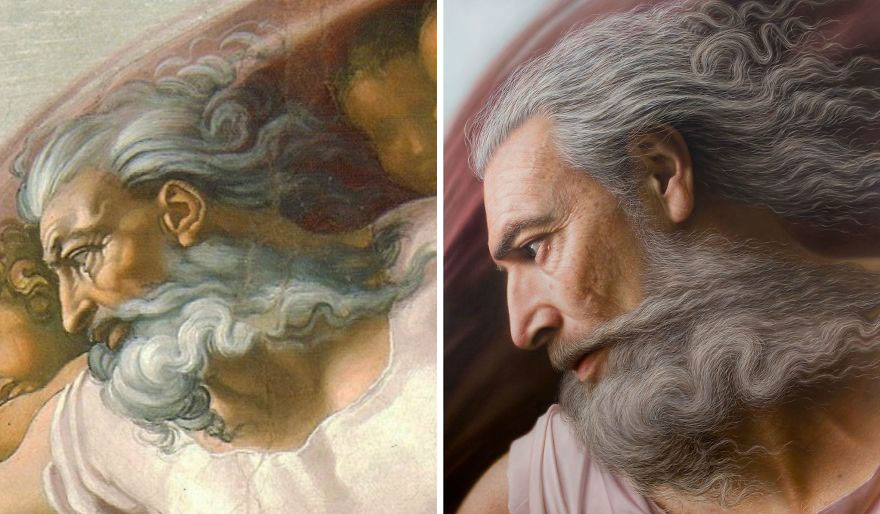
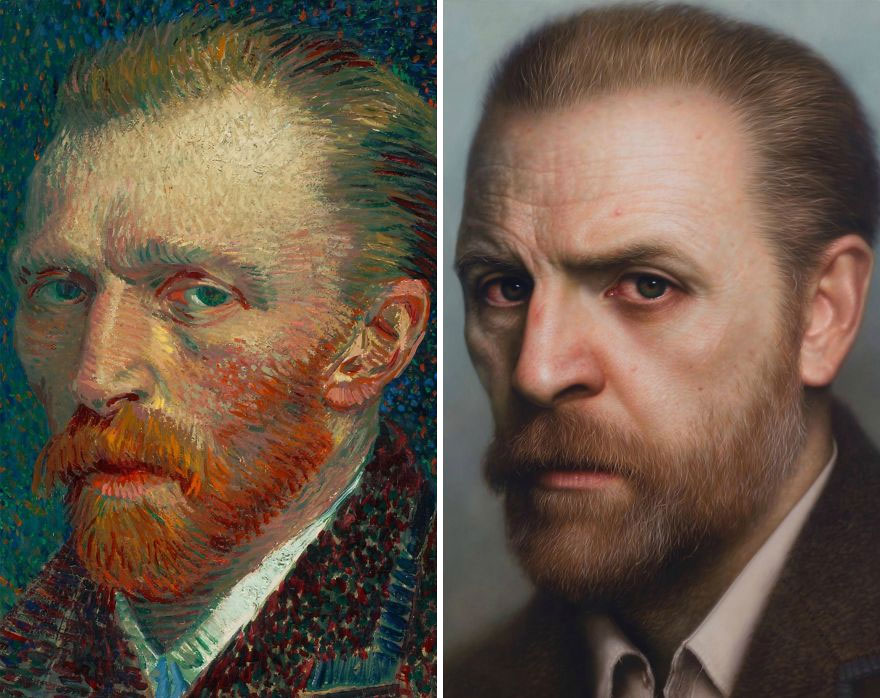
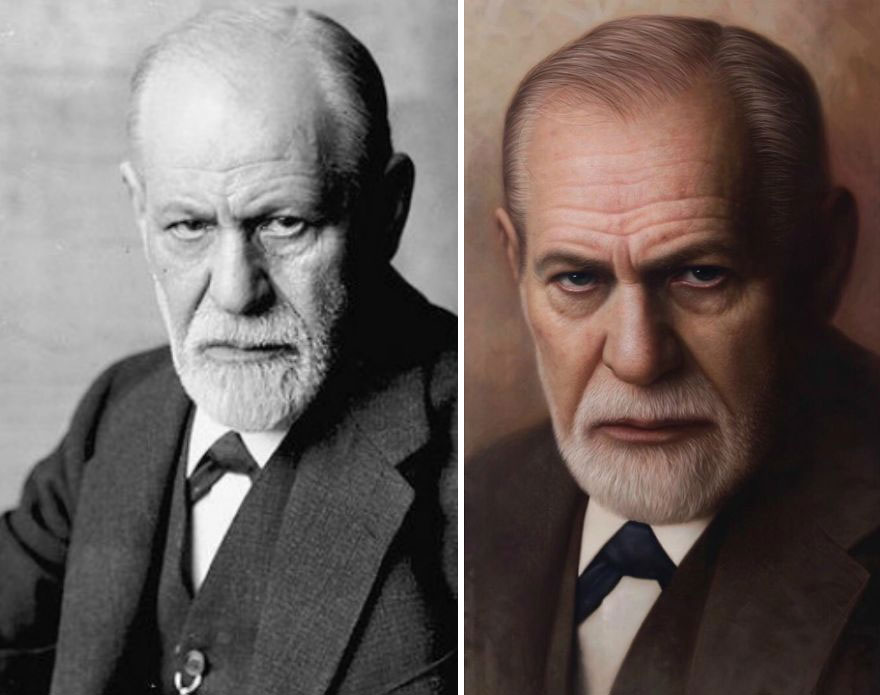




283
45